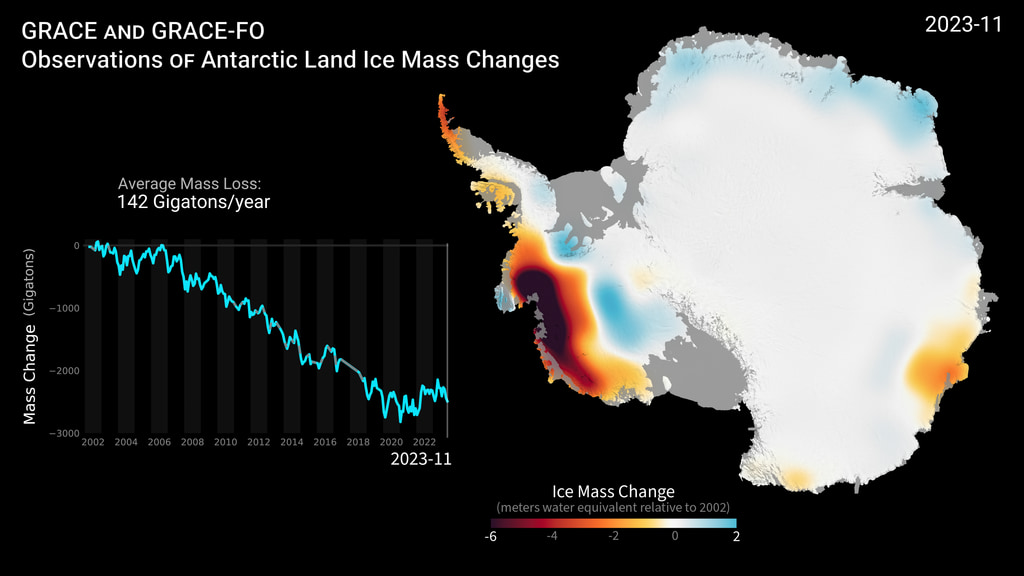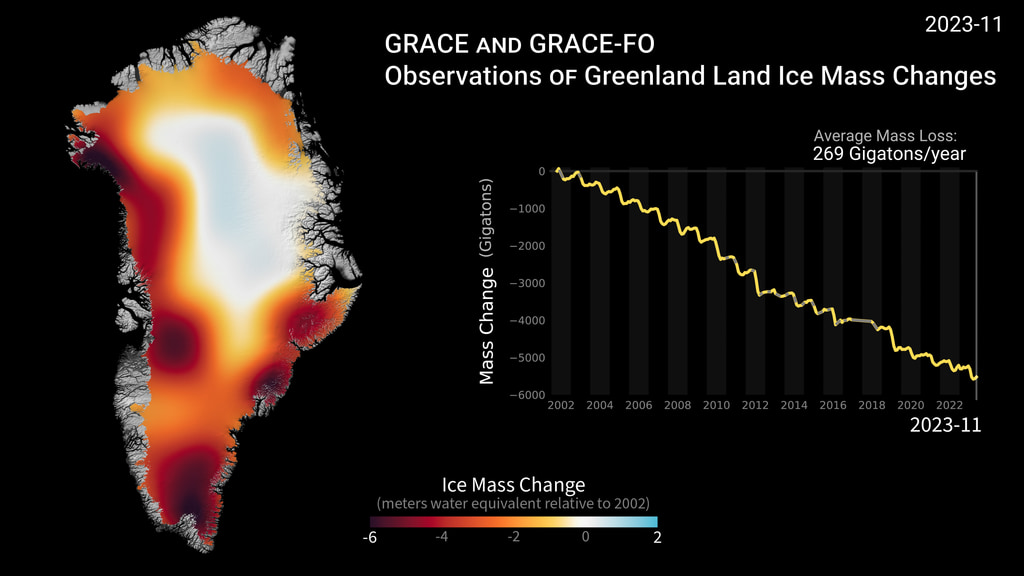GRACE and GRACE-FO polar ice mass loss
The mass of the Polar ice sheets have changed over the last decades. Research based on observations from the Gravity Recovery and Climate Experiment (GRACE) satellites (2002-2017) and GRACE Follow-On (since 2018 - ) indicates that between 2002 and 2023, Antarctica shed approximately 150 gigatons of ice per year, causing global sea level to rise by 0.4 millimeters per year; and Greenland shed approximately 270 gigatons of ice per year, causing global sea level to rise by 0.03 inches (0.8 millimeters) per year.
These images, created from GRACE and GRACE-FO data, show changes in polar land ice mass since 2002. Orange and red shades indicate areas that lost ice mass, while light blue shades indicate areas that gained ice mass. White indicates areas where there has been very little or no change in ice mass since 2002.
The average flow lines (grey; created from satellite radar interferometry) of the icesheets converge into the locations of prominent outlet glaciers, and coincide with areas of highest mass loss. This supports other observations that warming ocean waters near polar icesheets play a key role in contemporary ice mass loss.
Animation showing Antarctic and Greenland icesheet mass losses between 2002 and 2023. Has icesheet flowlines and intepolated frames for missing dates.
Animation showing Antarctic and Greenland icesheet mass losses between 2002 and 2023. Has intepolated frames for missing dates.
Animation showing Antarctic and Greenland icesheet mass losses between 2002 and 2023. Has icesheet flowlines.
Animation showing Antarctic and Greenland icesheet mass losses between 2002 and 2023.

Antarctic and Greenland icesheet anomalies on a white background.
For More Information
Credits
Please give credit for this item to:
NASA and JPL/Caltech
-
Scientist
- Felix W. Landerer (NASA/JPL CalTech)
-
Visualizer
Release date
This page was originally published on Friday, March 8, 2024.
This page was last updated on Wednesday, March 13, 2024 at 11:23 AM EDT.

